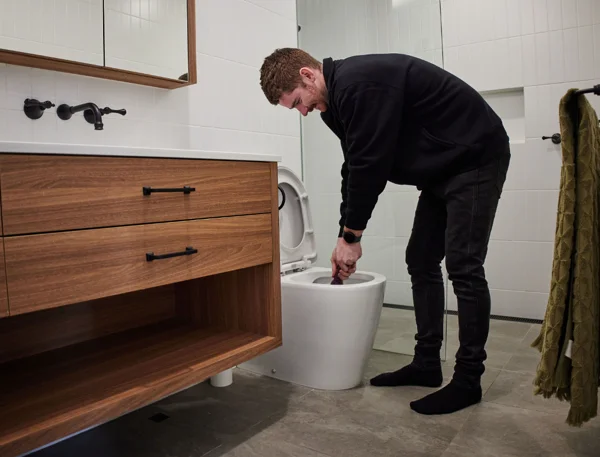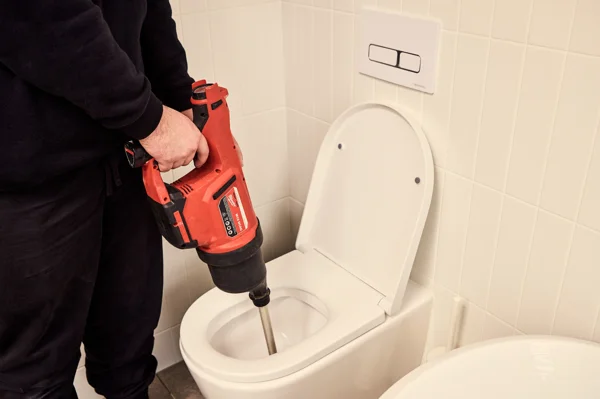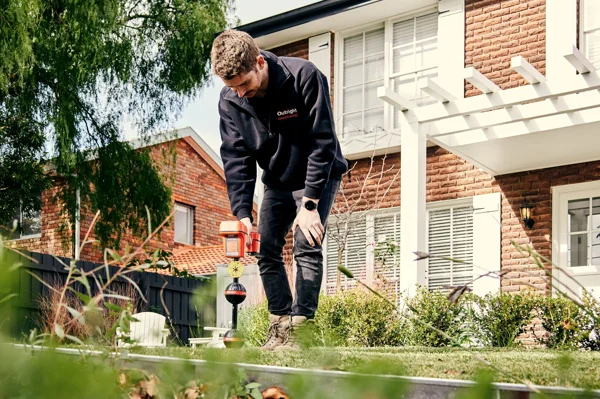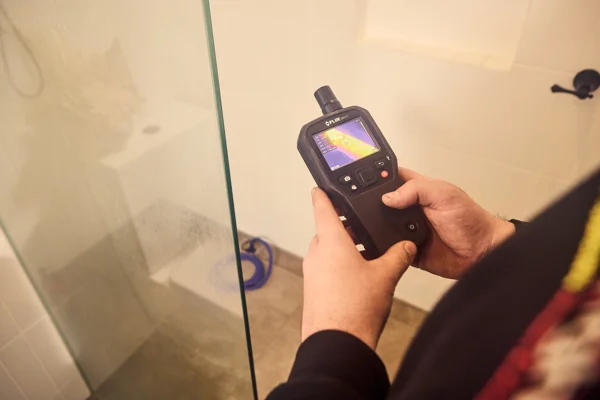Same-day toilet repair services across Melbourne
Outright Plumbing provides fast, fixed-price toilet repairs with same-day convenience. Backed by 25+ years’ experience and 700+ five-star reviews, we fix leaks and flush faults with care.
.webp)


Fixing toilet problems before they get out of hand
Toilets rarely fail quietly. A constant trickle that keeps you awake, water creeping across the floor, or a flush that just won’t clear: these are the kinds of issues that never improve on their own. Left long enough, they waste water, hike up bills, and damage the bathroom you rely on every day. Outright Plumbing sorts out toilet problems quickly and properly, so you can get back to normal without the stress.
- Stop the leaks that quietly soak into floors and skirting boards.
- Restore cisterns and flushes so they work the way they should.
- Save water and money by fixing problems at the source.
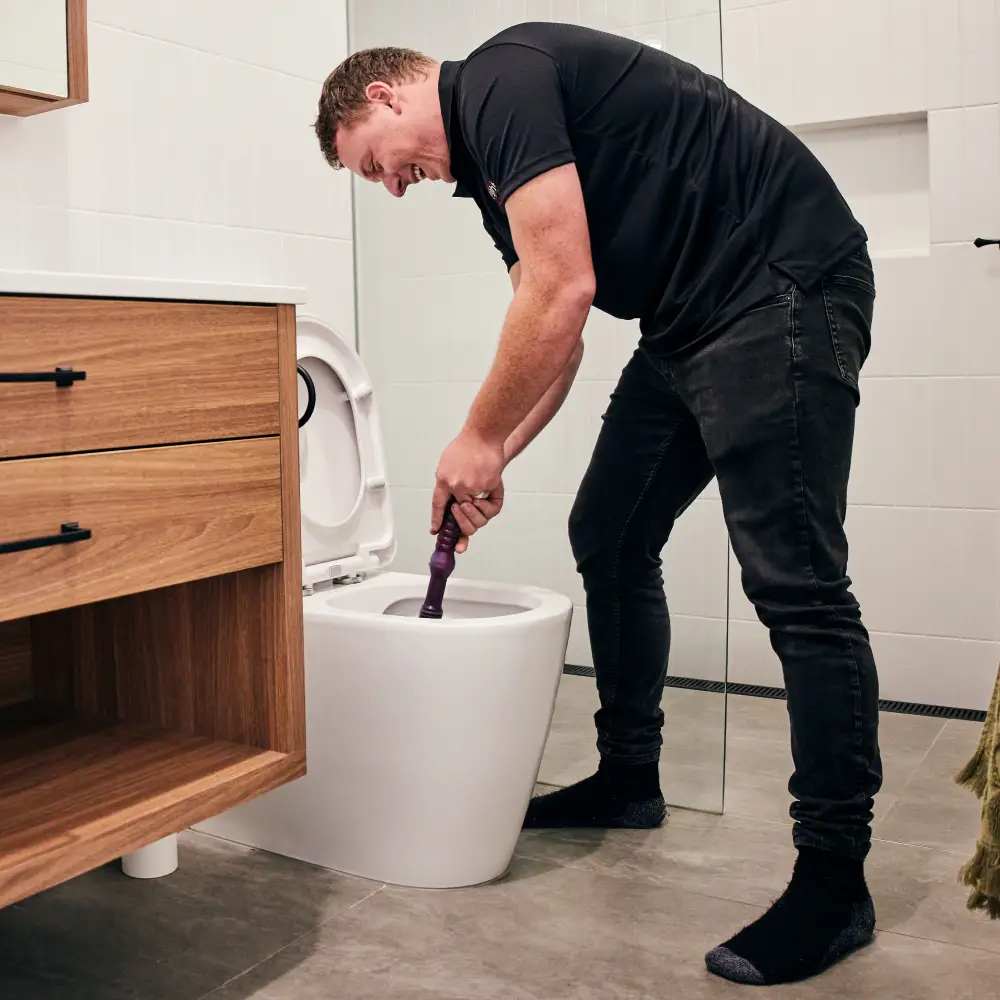
Plumbing services that cover more than toilets
Toilet repairs are just one part of the picture. Outright Plumbing handles everything from stormwater drains to hot water units, taps, and full bathroom plumbing. Whatever’s wrong, you won’t need to juggle multiple trades.
Our promises are backed up by hundreds of happy reviews
Bayside locals have left over 700 five-star reviews because we show up, fix the problem, and don’t leave a mess behind.

The toilet issues we’re called to most often
When people ring us, they don’t ask for “valve replacements” or “pan collar reseals”, they describe what they’re living with. Here’s how we usually hear it, and what’s really going on.
“My cistern never stops filling”
That constant sound of running water is usually a failed inlet or outlet valve. It can waste hundreds of litres every day. We swap the worn parts, reset the cistern, and make sure the water shuts off cleanly after every flush.
“There’s water around the base of the toilet”
Leaks at floor level point to a failed seal or collar. Even a small puddle can soak under tiles or into timber. We reseat the pan with new seals, anchor it properly, and pressure-test the waste so nothing escapes unseen.
“The flush is too weak”
If the bowl doesn’t clear, it could be a low cistern fill, a blocked rim, or even a partial blockage further down the line. We check both the toilet mechanism and the waste connection to make sure the fix actually lasts.
“There’s a smell we can’t get rid of”
Unpleasant odours often come from failed wax rings or collars that let sewer gas escape. We track the fault, reseal the pan, and stop the smell at its source.
Five things every homeowner should know about toilet repairs
Toilets don’t usually break all at once — they give you warning signs. The problem is that most of those signs look minor until a plumber explains what’s really happening. Here are the five things we think every homeowner should know about keeping their toilet in good shape.
A constantly running cistern isn’t just annoying
That trickling sound means the inlet or outlet valve isn’t sealing properly. Even a slow run can push up your water bill over time. Valves are designed to cycle thousands of times, but like any moving part, they eventually wear out. Replacing them early keeps the toilet efficient and stops that water wastage creeping up on you.
Leaks at the base can be more damaging than visible ones
If you see water around the bottom of the toilet, the pan collar or wax ring seal may have failed. What most people don’t realise is that these leaks often run underneath tiles or flooring, where they cause rot and mould. That’s why plumbers always reseat the pan properly, with a fresh seal and a pressure test before leaving the job.
Weak flushes usually have a clear cause
When the flush isn’t clearing the bowl, it’s not because the button wasn’t pressed hard enough; it’s because something is restricting flow. Common causes are blocked rim jets, a low cistern fill, or a faulty outlet valve. In some homes, we find the issue is further down the line, with a partial blockage in the sewer. Knowing where to look is half the battle.
Bad smells are often seal problems, not hygiene issues
Persistent odours in a bathroom aren’t always about cleaning. They’re often caused by seals that have dried out or cracked, letting sewer gas escape. This can happen even without visible water leaks. Replacing collars and ensuring airtight connections keeps the smells where they belong: inside the pipe, not in your home.
Small problems are cheaper to fix than delayed ones
Toilets are one of the few fixtures in your house that get used every day, often dozens of times. That means small faults add up quickly. A trickling cistern, a weak flush, or a minor leak might not seem urgent, but over months, they waste water, cause damage, or create bigger plumbing jobs. Acting quickly keeps repairs simple and affordable.
What to expect from our toilet repair plumbers
We’ve fixed thousands of toilets across Melbourne, and the process is always straightforward. Here’s how we’ll handle it for you.
Finding the fault fast
Whether it’s a leak, a constant trickle, or a button that won’t flush, we’ll track down the cause quickly and tell you exactly what needs doing.
Fixing it on the spot
Most repairs can be done then and there with the parts we carry. That means no waiting around, just a toilet that works again before we leave.
Checking it works properly
We’ll test the flush, check for leaks, and make sure everything is sealed up tight so you can get back to using it without any worries.
Call Outright Plumbing today if your toilet needs fixing
A broken toilet is stressful and disruptive. Outright Plumbing will get it repaired quickly so your home can get back to normal without the worry.
Our case studies show the plumbing work we deliver
We’ve repaired countless toilets and plumbing issues for homeowners. Each case study highlights how we solved the problem and left our clients with a repair they could rely on.
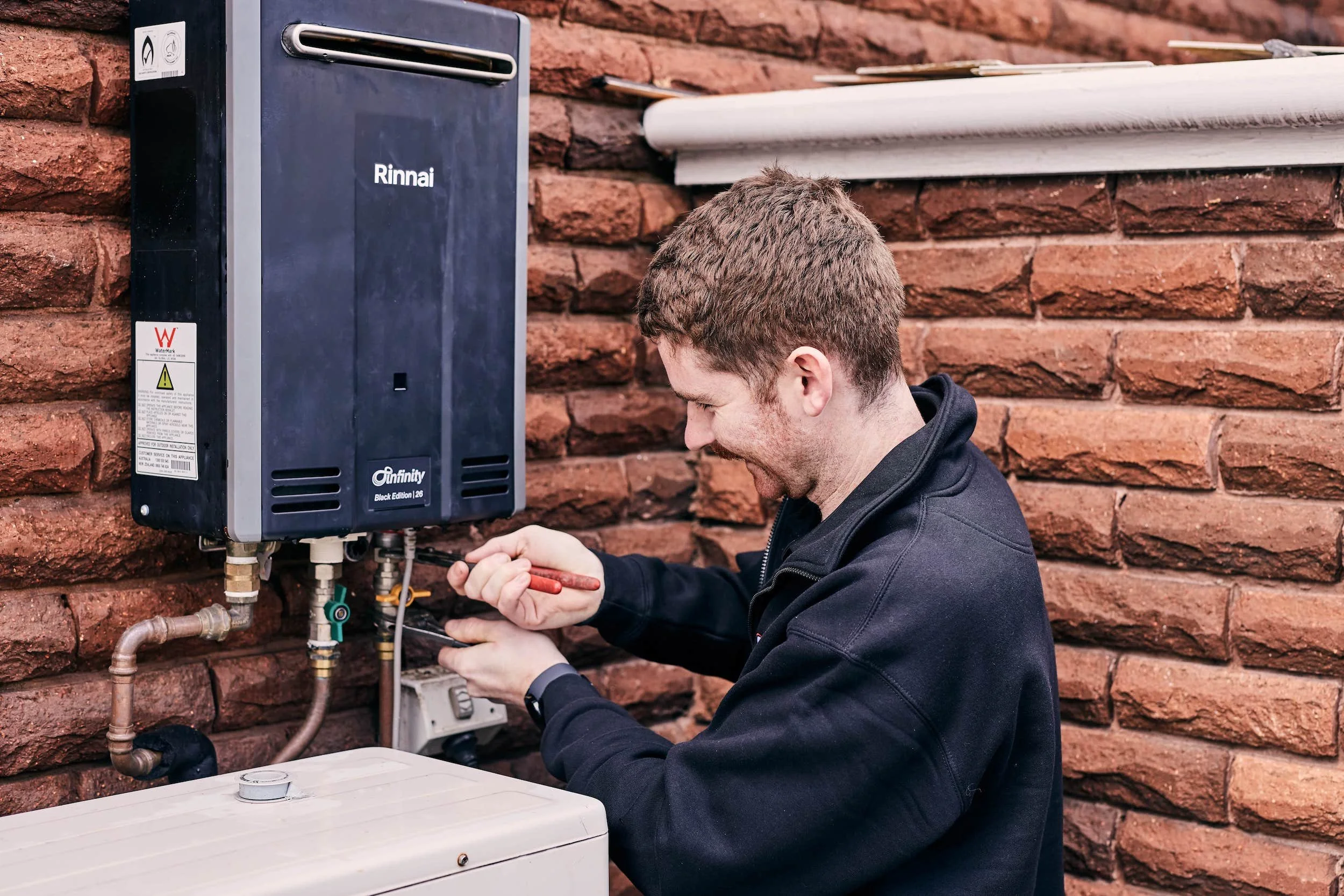
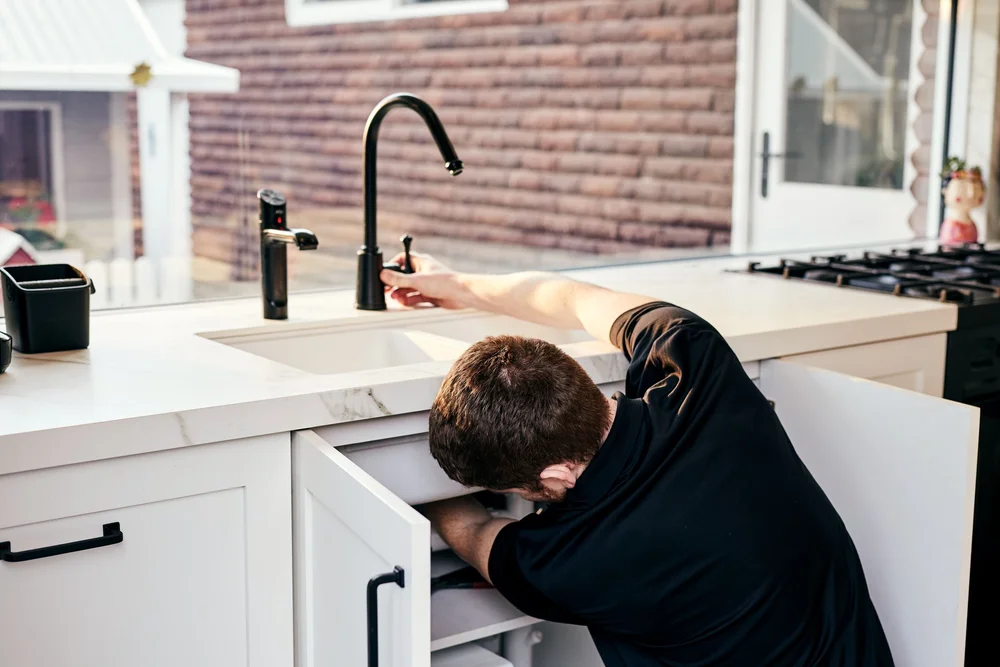


Toilet repairs for commercial facilities and managed properties
Toilets are one of the most used fixtures in any building, and when they fail, everyone notices. Outright Plumbing keeps them running in apartments, schools, businesses, and public spaces where downtime isn’t an option.
- Apartments and body corporates: Constantly running toilets can send shared water bills through the roof. We repair and report so managers know exactly what’s been fixed.
- Schools and childcare: Broken or leaking toilets create hygiene and safety risks. We carry out durable repairs that keep amenities available for students and staff.
- Councils and public facilities: Toilets in parks and community centres take a beating from heavy use. We reseal pans, replace parts, and fit vandal-resistant components to keep them open.
- Hospitality venues: Customers judge businesses on clean, working facilities. We repair toilets quickly to avoid compliance issues and keep venues welcoming.
Take a look at the plumbing work we do every day
Our gallery shows real jobs carried out in homes by our team, from small repairs to bigger fixes that keep households running smoothly.


We make toilet repairs simple and stress-free
When something as essential as a toilet stops working, you want it fixed quickly by someone you can trust. Here is why homeowners call Outright Plumbing when their toilet needs repairs.
We know the quirks of local homes
From older houses with ageing pipework to new apartments with compact bathrooms, we’ve seen it all. That experience means we know how to fix the problem without creating new ones.
We stand behind every repair we do
If a toilet we’ve repaired starts leaking or running again, we’ll return and fix it free of charge. Our guarantee shows we use quality parts and do the job properly the first time.
We give advice you can actually trust
Some toilets only need a new seal or valve, while others are better replaced. We’ll explain the difference clearly so you can make the choice that suits your home and budget.
We offer extra value with Outright Club membership
Outright Club members enjoy discounts, priority bookings and lifetime guarantees. It’s a simple way to save money and know you’ll always have a plumber you can rely on.
We’re the local Bayside plumbers you’ve probably seen around
From Brighton to Mordialloc, we’ve worked in homes just like yours. Chances are, we’ve already repaired a toilet on your street.
Meet the team
We’re friendly plumbers who’ll say hi to the dog, have a laugh while we work, and still leave your toilet running better than our jokes.
Everything you need to know about toilet repair plumbing
We get asked the same things every week by curious and concerned clients, so we’ve put together clear answers to help you understand the process.
How much does it cost to repair a toilet in Melbourne?
As a ballpark, getting your toilet repaired by a licensed plumber can cost $100–$300. But the actual cost of toilet repairs in Melbourne depends on the problem. A simple fix like replacing a seal or tightening fittings is usually straightforward and affordable. More complex jobs (such as repairing a leaking cistern or replacing faulty flush mechanisms) can take longer and require parts, which affects the price.
Here are a few factors that influence the cost:
- The type of toilet and the age of the system.
- Whether replacement parts are readily available.
- The time needed to diagnose and complete the repair.
At Outright Plumbing, we keep pricing clear and upfront. You’ll always know the cost before the work begins, and we won’t add hidden extras. Our experienced plumbers handle everything from a leaking toilet to a loose bowl, and provide repairs that last. For more on how licensed work is regulated, see the Victorian Building Authority.
Is it cheaper to repair or replace a toilet?
Whether it’s better to repair or replace depends on the condition of your toilet and the cause of the problem. If it’s a small fault (like a toilet leak, a worn washer, or a faulty flush), then repair is usually the most cost-effective choice.
If you’re dealing with an old toilet that has constant problems, a toilet replacement is often smarter long-term. New toilets are more water-efficient and can save money on bills.
If replacement is the right call, our plumbers can help with our toilet installation services. Outright Plumbing offers professional toilet repair and replacement, and we’ll always explain what makes sense for your home and budget.
Do you check if my plumbing system has bigger issues when repairing?
Yes. When we repair a toilet, we don’t just fix the symptom; we look at whether the plumbing system has underlying problems that could cause repeat issues.
Common causes of ongoing toilet troubles include:
- Tree roots causing damage to pipes.
- Worn or poorly fitted seals that lead to leaks around the base.
- Poor water pressure or hidden leaks affecting the cistern.
Our plumbing team will identify the cause of the problem, explain it in simple terms, and make sure it’s properly fixed. If we spot something that needs more attention, we can connect you with our full range of plumbing services.
Can an old toilet be repaired to meet modern water efficiency standards?
Sometimes yes, but not always. Many old toilets can be repaired to stop leaks or other toilet problems, but they often still use more water than modern designs. Repairs won’t change the litres per flush rating, so efficiency may remain limited.
If your goal is to save water, a replacement is usually the better option. Newer models are designed with dual-flush technology to cut consumption. Regular servicing through our plumbing maintenance services also helps extend the life of an older unit until you’re ready to upgrade.
At Outright Plumbing, we’ll give you honest advice on whether repair is worthwhile or if upgrading to the right toilet is a smarter investment.
What’s the most common repair you do for Melbourne homeowners?
The most frequent repair is a leaking cistern that constantly refills, which wastes water and drives up bills. We also regularly fix faulty flush mechanisms and reseal bowls to stop leaks around the base.
Other everyday issues include:
- Toilets that run after flushing.
- Loose or unstable toilets.
- Problems caused by excessive toilet paper or wipes.
If it turns out the real issue is a toilet blockage, our blocked toilet plumbers can clear clogs safely and thoroughly. Whatever the problem, our expert plumbers will provide quick and reliable service to get your toilet working properly again.
Do you carry the right parts for different toilet brands and models?
Yes. Our vans are stocked with the parts and fittings needed for the most common toilet problems. We carry spare valves, washers, seals and more for a wide range of toilet brands and models, so we can usually complete the repair on the spot.
If a less common part is required, we’ll source it quickly through our local suppliers. That way, you don’t have to wait weeks for a fix.
Outright Plumbing’s fully licensed and skilled plumbers provide quick and reliable service across Melbourne. We’ll make sure your repair is done properly, with the right parts for your toilet.
Can toilets with concealed cisterns be repaired without damaging walls?
Yes. Concealed cisterns can often be repaired without damaging walls, provided there’s an access panel. Our professional plumbers know how to work with these systems and can usually reach the parts that need attention without disrupting tiles or finishes.
In cases where access wasn’t installed properly, repairs are more challenging. Even then, our expert plumbers use careful methods to avoid unnecessary damage.
We also provide ongoing support for hidden systems through our cistern plumbing services, so you can keep everything working the way it should.
Do you repair bidet toilets or Japanese washlet systems?
Yes. Our Melbourne plumbers are trained to repair bidet toilets and modern washlet systems, including electronic features like heated seats and sensors. These often need specialist parts and know-how.
Common issues we can fix include:
- Faulty flush or spray functions.
- Electrical faults that affect controls or sensors.
- Water leaks from worn fittings.
Outright Plumbing provides all types of toilet repair, including advanced models. And if it’s urgent, you can rely on our emergency plumbing services for help with urgent plumbing issues.
Blogs worth a quick read
A few of our blogs that homeowners often find useful:
Our Instagram proves plumbers can be entertaining too
Follow us for a mix of real repair jobs, before-and-afters, and the occasional mystery object pulled out of a drain.
Book your toilet repair with Outright Plumbing today
Don’t let a broken toilet throw your whole house off. Call Outright Plumbing now, and we’ll get it fixed quickly with licensed work and clear pricing.







.svg)





.svg)

.svg)







.svg)











.svg)


